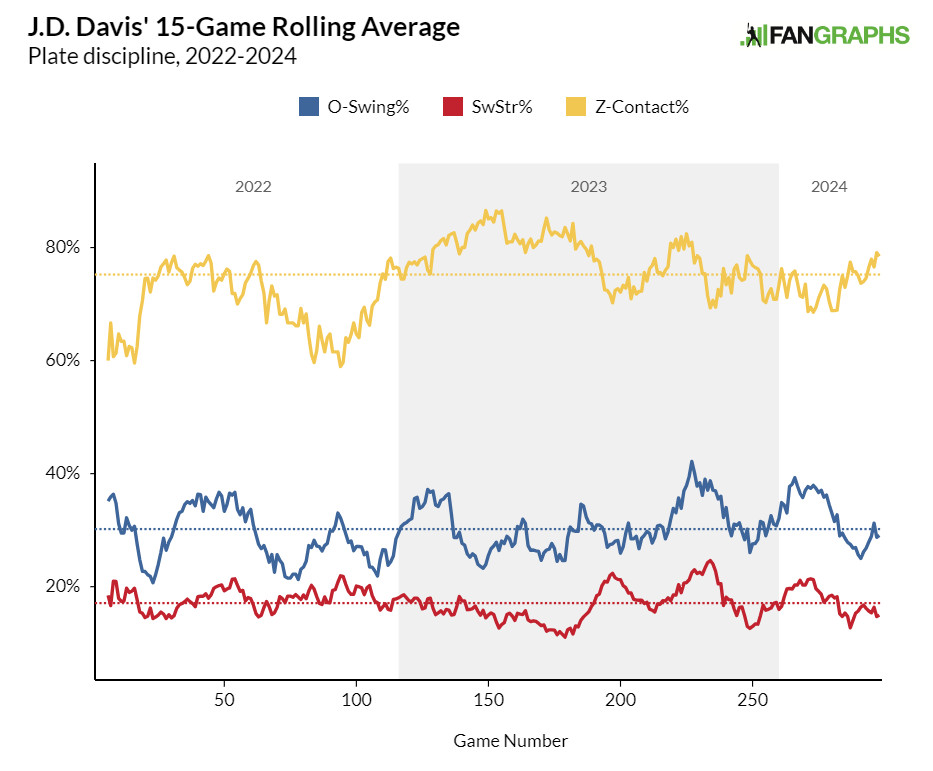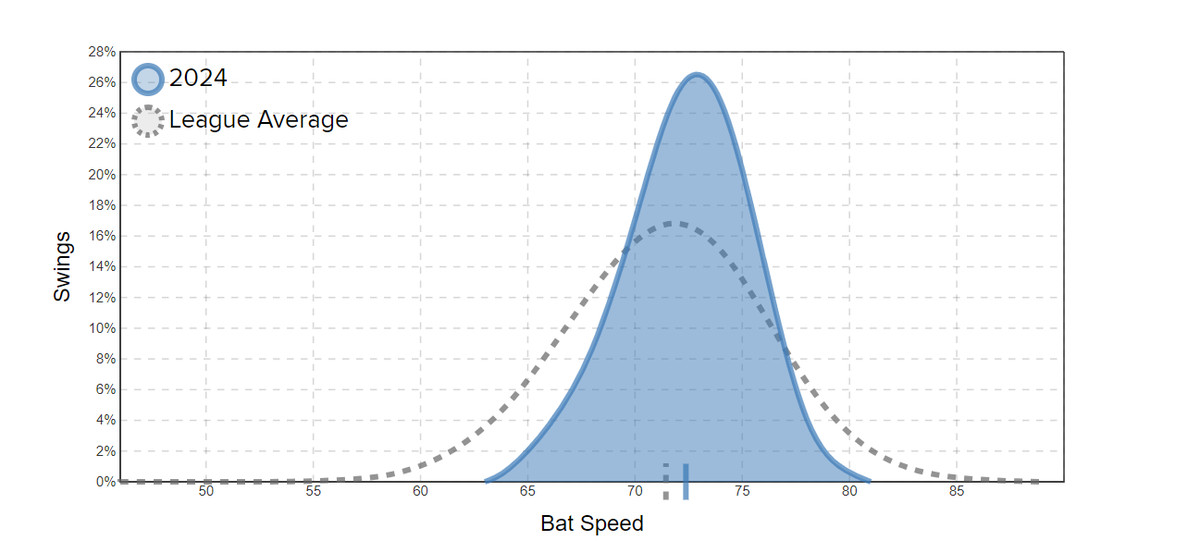After enjoying a relatively clean bill of health through the first two months of the season, the injury bug finally hit the Yankees. First, it was Clarke Schmidt who fell out of the rotation, before injuries arose to the back end of the pitching staff, with Ian Hamilton, Nick Burdi and Cody Poteet all hitting the IL. Now the team is feeling the pressure, with Giancarlo Stanton and Anthony Rizzo on the shelf.
The Yankees have been forced to address all of the pitching injuries, importing players like Tim Hill and Phil Bickford, and the story is the same on the position player side, with yesterday’s acquisition of outfielder interior JD Davis. Davis, 31, had been designated for assignment by the A’s last week after hitting an uninspiring .236/.304/.366 slash line in 135 plate appearances following his unceremonious spring DFA by the Giants.
As inauspicious as it may seem to rely on the castoffs of a lowly Oakland team, Davis is about as good as the Yankees can get right now. Jasson Domínguez’s untimely oblique injury leaves them with no obvious internal candidate to replace Stanton, and Oswald Peraza’s poor play in the minors also leaves them with no quality options to make appearances at the interior corner. Davis can take both of those opportunities for now, bridging the gap until the trade deadline, when the Yankees can make a more decisive decision on how to shape their roster for the rest of the season. More MLB teams will also be willing to enter into negotiations at this point.
Davis is a limited player, but one whose limitations don’t prevent him from reasonably fitting into this Yankees roster. He’s a strike-first player, who has played in the field during his career, but is exclusively an infield type at this point. Davis has almost always performed poorly as a fielder, both by measurement and eye test, but he can at least handle third and first base in a reasonably professional manner.
Ultimately, acquiring Davis will be judged on his ability to add depth to a Yankees roster that currently has four or five. Davis’ line with Oakland equates to a 98 wRC+ average, although projections paint a more optimistic picture. ZiPS offers a positive forecast: a .240/.324/.397 line and a 112 wRC+. This is right in line with Davis’ career standards, which stand at 113 wRC+ over 634 games. This offensive level, combined with Davis’ below-average defense, makes him a roughly average player.
The Yankees would sign up for this level of offense in a heartbeat, with the 82 wRC+ they’ve gotten from cornerbacks this year ranking 26th in baseball. The question becomes: Can the Yankees expect Davis to reach his projection, or is there something about his run with Oakland that indicates he started to slip in his early 30s?
Davis’ time with the A’s is only a small sample size, but we can still examine it to see if he has shown signs of a significant physical decline. I like to start with batting discipline, because an aging player with a slowing reaction time will likely make worse batting decisions.

There’s a lot going on here, but the conclusion is simple. Neither Davis’ chase rate (O-swing%) nor his strikeout rate has increased this year, and his contact rate in the zone is stable. Davis recorded a career-low walk rate this season, but his plate discipline numbers suggest that has more to do with small-sample errors, and perhaps pitchers are throwing him more pitches in the zone, only with a huge regression in the approach to the plate.
We can also check under the hood of Davis’ Statcast profile for any glaring physical deficiencies. His sprint speed dropped from 25.8 ft/s to 25.4 ft/s, a slight erosion but far from a sudden collapse. He retained the ability to make solid contact, with his hard hit rate in line with last season, although his average exit velocity was down slightly.
This might be a useful place to check out MLB’s new bat tracking data. We can’t compare Davis’ bat speed to previous years, but we can at least check how he currently stacks up in the league.

This dark blue curve represents Davis’ swings, and as is evident, the vast majority of his swings are harder than league average. This is not to say that Davis is a great hitter; his fast swing rate (defined as a swing greater than 75 mph) is actually slightly below league average. But we can at least rest assured that Davis hasn’t suddenly seen his bat speed completely diminished as he gets older.
Overall, Davis’ struggles in Oakland in a small sample size look like this: a small sample size. Although he doesn’t present the profile of a world beater, Davis’ physical profile looks good, consistent with recent seasons. That doesn’t mean he’s close to returning to his career averages, but the most likely path here is that Davis is a good hitter with defensive warts for the future.
And that should be fine for now. The Yankees can deploy him tactically, using him often against lefties (he has a solid career OPS of .779 against lefties) and pulling him to a higher defensive sub when the situation calls for it.
Finding a better player who fits better at his stage just wasn’t feasible. Luis Arráez and the Padres weirdness aside, teams don’t actively start buying and selling until much closer to the trade deadline, especially in the modern MLB landscape that sees almost every team in a state of pseudo-conflict.
The Yankees can reasonably expect modest production from Davis for the next month and then reevaluate. They can monitor Rizzo and Stanton’s schedules, assess DJ LeMahieu’s readiness, assess Ben Rice’s readiness, then call at the deadline to see if they want to continue upgrading. Davis should provide some stability while all of these evaluations take place, at a time when it’s not easy to draft a vaguely competent veteran and plug him into the lineup. In a perfect world, Davis won’t be a big factor come playoff time, but instead will be a useful piece that helps the Yankees close the gap.